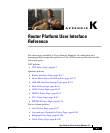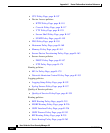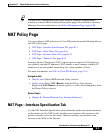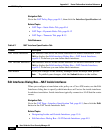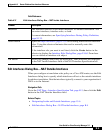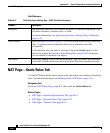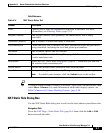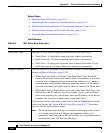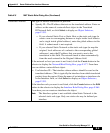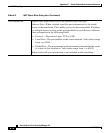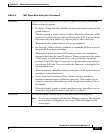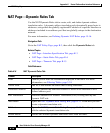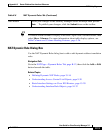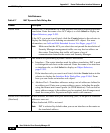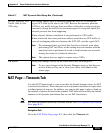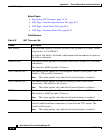
K-9
User Guide for Cisco Security Manager 3.2
OL-16066-01
Appendix K Router Platform User Interface Reference
NAT Policy Page
Translated Address The type of address translation to perform:
• Specify IP—The IP address that acts as the translated address. Enter an
address or the name of a network/host object in the Translated
IP/Network field, or click Select to display an Object Selectors,
page F-593.
–
If you selected Static Port or Static Host as the static rule type (to
create a one-to-one mapping between a single inside local address
and a single inside global address), enter the global address in this
field. A subnet mask is not required.
–
If you selected Static Network as the static rule type (to map the
original, local addresses of a subnet to the corresponding global
addresses), enter the IP address that you want to use in the
translation in this field. The network mask is taken automatically
from the mask entered in the Original Address field.
If the network or host you want is not listed, click the Create button in the
selector to display the Network/Host Dialog Box, page F-477. From here
you can define a network/host object.
• Use Interface IP—The interface whose address should be used as the
translated address. (This is typically the interface from which translated
packets leave the router.) Enter the name of an interface or interface role
in the Interface field, or click Select to display an Object Selectors,
page F-593.
If the interface role you want is not listed, click the Create button or the Edit
button in the selector to display the Interface Role Dialog Box, page F-464.
From here you can create an interface role object.
Note The Interface option is not available when Static Network is the
selected static rule type. Only one static rule may be defined per
interface.
Table K-5 NAT Static Rule Dialog Box (Continued)



